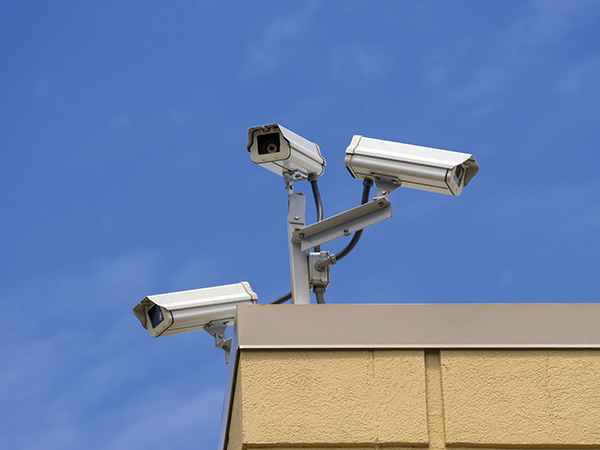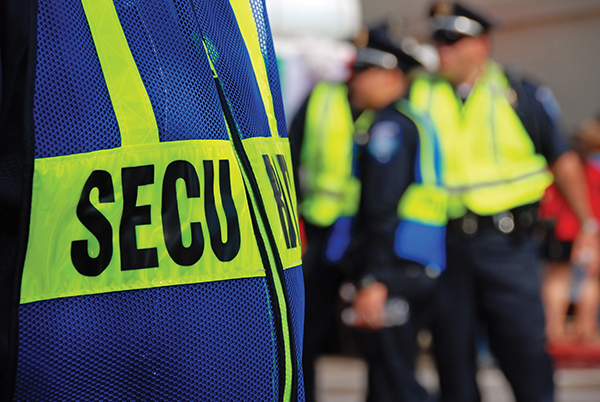
In today’s sports and entertainment industry, there is a duty of care to keep fans safe whether at the stadium, concert, festival or arena. Emerging threats run the gamut and keep venue ownership groups awake at night. The goal of an effective event security strategy is to integrate various components to create a comprehensive plan that safeguards participants, assets and the overall success of the event.
When fans have a safe and enjoyable experience, they will most likely make return visits to the venue. If not, they’ll likely take to social media outlets and let the world know why and how things went wrong. In addition to the main attraction of an event (the game or concert), impressions of the staff, facility cleanliness, access to amenities and overall safety and security impact the perception of satisfaction and a desire to return.
When holistically viewing risks for stadia and events, deploying an enterprise security management approach -- a multi angle view -- is paramount to best mitigate risks within the security ecosystem. In terms of staff, it’s important to emphasize that the field of event security is a highly specialized niche discipline.
Emerging threats, challenges and vulnerabilities continue day in and day out. As the vertical constantly evolves, security specialists must be aware of the risks stemming from cyber/information technology (IT), ransomware, malware, active assailant, workplace violence, severe/inclement weather, IED bomb scares, domestic or international terrorism, lone actor violence, unruly crowds, intoxicated patrons, stampede, errant drones, political dividedness and civil unrest challenges, to name just a few.
Following are five best strategies for properly safeguarding today’s special events:
1. Conduct Proper Site Visit/Risk Assessment

Conducting yearly risk assessments is a key risk mitigation tool in keeping the venue safe from existing threats. Understanding the types of crowds and demographics entering the venue is important as well. Being prepared in advance places the venue in a position of strength to best meet today’s challenges.
Viewing emerging threats from many angles means seeing the event through a proactive lens. Security leaders are well served when taking advantage of a fresh set of eyes and ears that can objectively look at the threats, gaps and vulnerabilities in the venue’s sports security playbook. Security consultants and technology integrators can offer a unique perspective with these initiatives.
Following are several questions event security specialists should consider in their risk assessment:
• How close is the nearest medical facility in the event of a mass casualty incident?
• How often does the venue conduct active assailant/shooter drills?
• What is the venue’s crisis communication policy?
• Who has been designated as the venue’s media relations liaison?
• How does messaging work, and what channels will carry communications in the event of a security problem?
• How concerned is the venue about a cyber/IT breach?
• What will the facility team do in the event the lights go out at the stadium?
• How will the facility determine if the event is an act of terrorism or facilities related?
• What specific contingency plans are in place?
• What steps has the venue security team taken with respect to crowd control measures, stampedes, etc.?
• What plans/policies are in place to deal with intoxicated patrons?
• Is the venue security team trained in verbal de-escalation skills?
• How concerned is the venue about foodborne illness/contamination?
• How current is the venue drone policy?
• How often has local law enforcement trained at the venue?
• How are volunteer staff being properly vetted/credentialed?
• What technologies has the venue implemented to assist with traffic control, vehicle incursions/vehicles as weapons, command center communications?
• Does the venue security manager have access to the JTTF-Joint Terrorism Task Forces, U.S. Marshals, FEMA, U.S. Secret Service, FBI and other government/agencies/resources?
• Does the venue have a robust third-party vendor management/intelligence oversight policy in place?
2. Establish and Continually Train Your Best Team

Guest services and security staff lead the way in terms of patron and brand protection. Both are the face and name recognition of the organization and the first point of contact as fans arrive at the venue. Cross training event security and guest services staff will ensure all staff can effectively lead patrons to safety during a true emergency.
Having confidence in your venue staff starts with ensuring that the venue leadership group is providing staff with the necessary tools to be the most successful at their jobs. Emerging threats, challenges and vulnerabilities will continue for the foreseeable future. The sports security ecosystem is constantly evolving. Impress upon your venue staff that sports security is a highly specialized field. This practice starts with a thorough and complete risk assessment of the venue along with proactive risk mitigation staff training.
3. Plan, Plan, Plan and Plan Some More
What someone does in a practice situation is typical of how they will respond in a true crisis. The key is to practice, practice, practice….and practice some more. In the planning stage, event security specialists should review policies and procedures and train venue staff frequently. Policies/procedures/protocols such as active assailant, severe/inclement weather, insider threat, business continuity/disaster recovery and crisis communication should be reviewed, revised and updated accordingly.
Planning also involves conducting evacuation drills, mass casualty scenarios, tabletop exercises, red team and computer simulations. Planning and practicing responses to situations are key to ensuring people, procedures and processes are aligned to effectively manage, mitigate or alleviate whatever is threatening safety and security at an event.
4. Learn from Best Practices, Information Sharing, After Action Reports-AAR, Case Studies
Learning lessons from security incidents is a good measure to test the venues’ resolve. Studying the past assists venue leadership with being best prepared to meet present day challenges. Individuals tasked with event security and safety should research sports events that have been the target of criminal activity (the Boston Marathon bombing is an example, though unfortunately, it is not the only one) and apply a growth mindset and lesson learned approach to safeguarding people and venues.
Analyzing case studies and incidents provides insight into the importance of information sharing, public-private partnerships, fusion centers, effective/efficient communications, crisis communications, pandemic planning and responsible social media monitoring. Awareness is heightened toward terrorism; lone wolf attacks; insider threats; chemical, biological and radiological agents; foodborne illnesses; aerial assaults and black swan events; inclement/severe weather; crowd crush and surges; and geopolitical divisiveness leading to civil unrest.
5. Stay current with Continuing Education (CE) and Professional Career Development
Knowledge, continuous lifelong learning and professional career development are paramount for today’s venue staff to remain prepared for known and unknown threats to safety and security. The following educational/industry organizations/resources are recommended to enhance skills and knowledge for events:
• The National Center for Spectators Sports Safety and Security, affiliated with the University of Southern Mississippi
• The International Association of Venue Managers
• The Stadium Managers Association
• ASIS International
• Security Industry Association
• Disaster Recovery Journal
• Innovation Institute for Fan Experience
• Texas A&M Engineering TEEX-Sport and Special Event Risk Management
The Bottom Line
Safeguarding today’s special events requires hard work, persistence, organization and effective event planning. Individuals responsible for event security and safety should be aware of available or emerging technologies such as biometrics, iris scans, two-way radio communications, incident tracking-EMS calling systems, geo-fencing and bollards-crowd safety solutions for targeting threats.
The responsibility of ensuring safety and security within the event ecosystem requires a commitment to executing strategies such as conducting risk assessments, planning, assembling a talented staff, learning from previous incidents, sharing best practices and investing in continuous training. SDM
